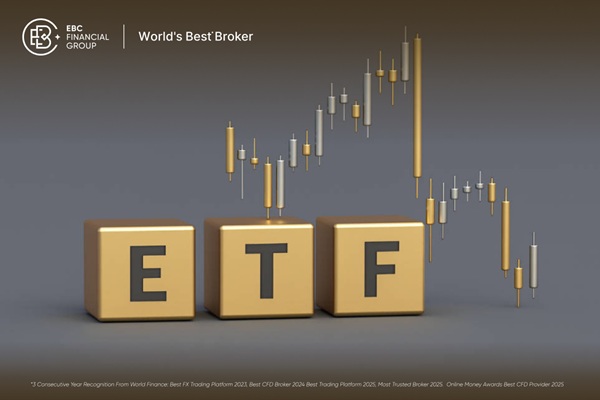In a world of financial uncertainty, the stock market remains one of the most potent tools for wealth creation. Whether you're looking to build long-term savings, supplement your income, or achieve specific financial goals, understanding how to make money in the stock market is key to building a prosperous future.
Rather than choosing between passive or active investing, many successful investors adopt a hybrid approach—blending long-term portfolio building with strategic decision-making. This article explores that balanced path, offering actionable guidance through six essential pillars.
Setting Clear Financial Goals and Time Horizons
 Before diving into stock selection or asset allocation, it's vital to know why you're investing in the first place. Financial goals provide direction and help determine your risk tolerance, investment style, and time frame.
Before diving into stock selection or asset allocation, it's vital to know why you're investing in the first place. Financial goals provide direction and help determine your risk tolerance, investment style, and time frame.
Ask yourself:
Are you saving for retirement in 30 years, or for a house deposit in 5?
Do you want consistent income, or are you focused on capital appreciation?
Can you tolerate short-term volatility, or do you prefer stability?
Once your goals are defined, establish a time horizon. A long-term investor (10+ years) can afford to weather market downturns, whereas short-term investors might prioritise safer, more Liquid Assets. Aligning investments with your life stage and objectives allows you to make rational decisions during volatile market periods.
Building a Diversified Portfolio: Funds, Stocks and Sectors
 Diversification is one of the most fundamental principles in investing. By spreading investments across multiple asset classes, industries, and geographies, you reduce the impact of any single underperforming asset.
Diversification is one of the most fundamental principles in investing. By spreading investments across multiple asset classes, industries, and geographies, you reduce the impact of any single underperforming asset.
There are three core components to a diversified equity portfolio:
These offer instant diversification by tracking broad market indices like the FTSE 100. S&P 500. or MSCI World Index. ETFs are particularly popular due to their low fees and liquidity. They are ideal for passive investors and serve as a stable core for any portfolio.
If you're willing to conduct some research, investing in select companies can enhance returns. Choose businesses with strong fundamentals, clear growth trajectories, or consistent dividend payouts. Balance your stock picks between:
Large-cap "blue chips" (e.g. Unilever, Apple)
Mid-cap growth stocks
Small-cap emerging opportunities
Rather than concentrating all exposure in one industry (e.g. technology), consider balancing your portfolio across defensive sectors (healthcare, consumer staples) and cyclical sectors (finance, energy, industrials). This helps cushion losses during market downturns.
Income Generation: Dividend Stocks and REITs
While some investors focus solely on capital gains, income investing offers another path to generating consistent returns. Dividend-paying stocks and Real Estate Investment Trusts (REITs) are two key vehicles in this strategy.
Companies that pay regular dividends share a portion of their profits with shareholders. These can provide a reliable income stream and are particularly useful for retirees or those seeking cash flow. Look for:
A history of increasing dividends
A healthy payout ratio (not too high to be unsustainable)
Industry stability (utilities, telecoms, consumer goods)
REITs offer exposure to property markets without needing to own physical real estate. They are legally required to distribute most of their income to shareholders and often pay above-average dividends. UK examples include British Land and Segro.
Over time, reinvesting dividends—known as dividend compounding—can significantly accelerate portfolio growth.
Incremental Investment: Dollar-Cost Averaging vs Lump Sums
Timing the market is notoriously difficult, even for professionals. That's why many retail investors rely on incremental investing strategies to smooth volatility and avoid emotional decisions.
This method involves investing a fixed amount at regular intervals—monthly, for example—regardless of market conditions. When prices are low, you buy more shares; when prices are high, you buy fewer. Over time, this strategy:
Reduces the impact of market volatility
Instils financial discipline
Helps avoid the paralysis of trying to "buy the dip"
Alternatively, if you've received a windfall or have savings ready to invest, research shows that investing sooner rather than later often yields higher returns over the long term—especially in rising markets. However, it comes with higher short-term risk.
Both strategies have merit, and you can combine them depending on your situation.
Use of Screeners and Research Tools
To make informed decisions—especially when selecting individual stocks—it's essential to utilise financial tools and data platforms.
Popular stock screeners include:
Yahoo Finance – for historical price data, dividend history, and news
Finviz – widely used for U.S. stock screening and filtering
TradingView – technical analysis and charting
Simply Wall St – visual-based analysis with a focus on fundamentals
Morningstar UK – in-depth fund and ETF ratings
Using filters such as price-to-earnings ratio (P/E), dividend yield, revenue growth, and market capitalisation, you can identify stocks that match your investment strategy.
Even if you prefer passive investing, these tools can help you choose the most suitable ETFs or funds based on your goals.
Monitoring Performance and Adjusting Allocations
Investing isn't a "set it and forget it" exercise. While you shouldn't panic at short-term market movements, it's crucial to review your portfolio periodically—at least once or twice a year.
Here's what to focus on during reviews:
Has your risk tolerance changed? (due to age, income, or life events)
Is any asset class over- or underperforming?
Do you need to rebalance allocations back to your target weights?
Are your investments still aligned with your financial goals?
For example, if technology stocks have boomed and now make up 50% of your portfolio (when your target was 25%), you might consider trimming that exposure and redistributing capital to underweight sectors or assets.
Rebalancing helps you lock in gains and maintain a consistent risk profile over time.
Final Thoughts: The Smart Way to Build Wealth in the Market
Making money in the stock market is not about chasing the latest hype or timing perfect entry points. It's about having a strategy—rooted in clear goals, diversification, consistent investing, and disciplined reviews.
A hybrid approach that blends passive core holdings with active awareness of market opportunities empowers you to build sustainable wealth over time. Use the right tools, stay patient during down cycles, and remember: time in the market usually beats timing the market.
As Warren Buffett once said, "The stock market is a device for transferring money from the impatient to the patient." Be the patient.
Disclaimer: This material is for general information purposes only and is not intended as (and should not be considered to be) financial, investment or other advice on which reliance should be placed. No opinion given in the material constitutes a recommendation by EBC or the author that any particular investment, security, transaction or investment strategy is suitable for any specific person.




























